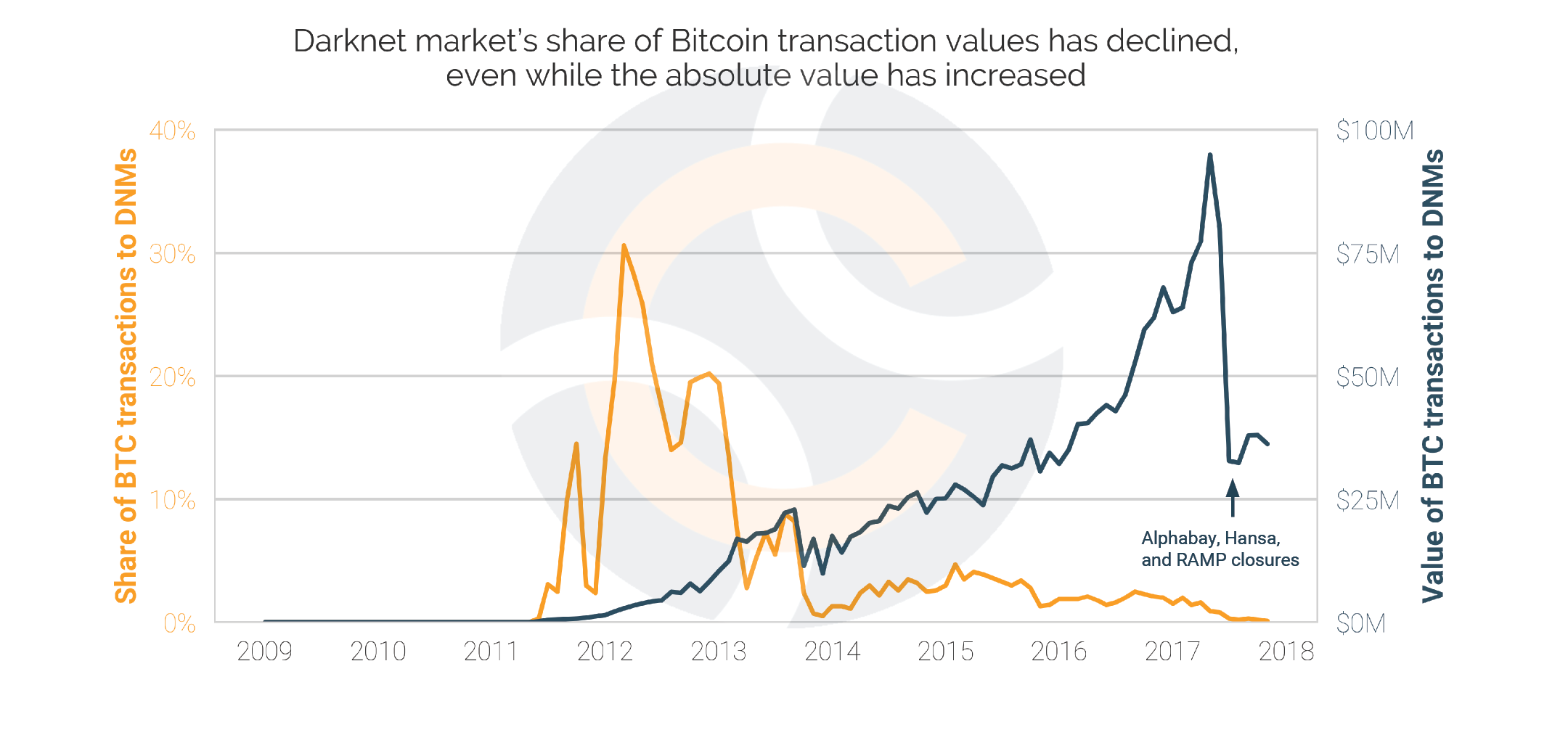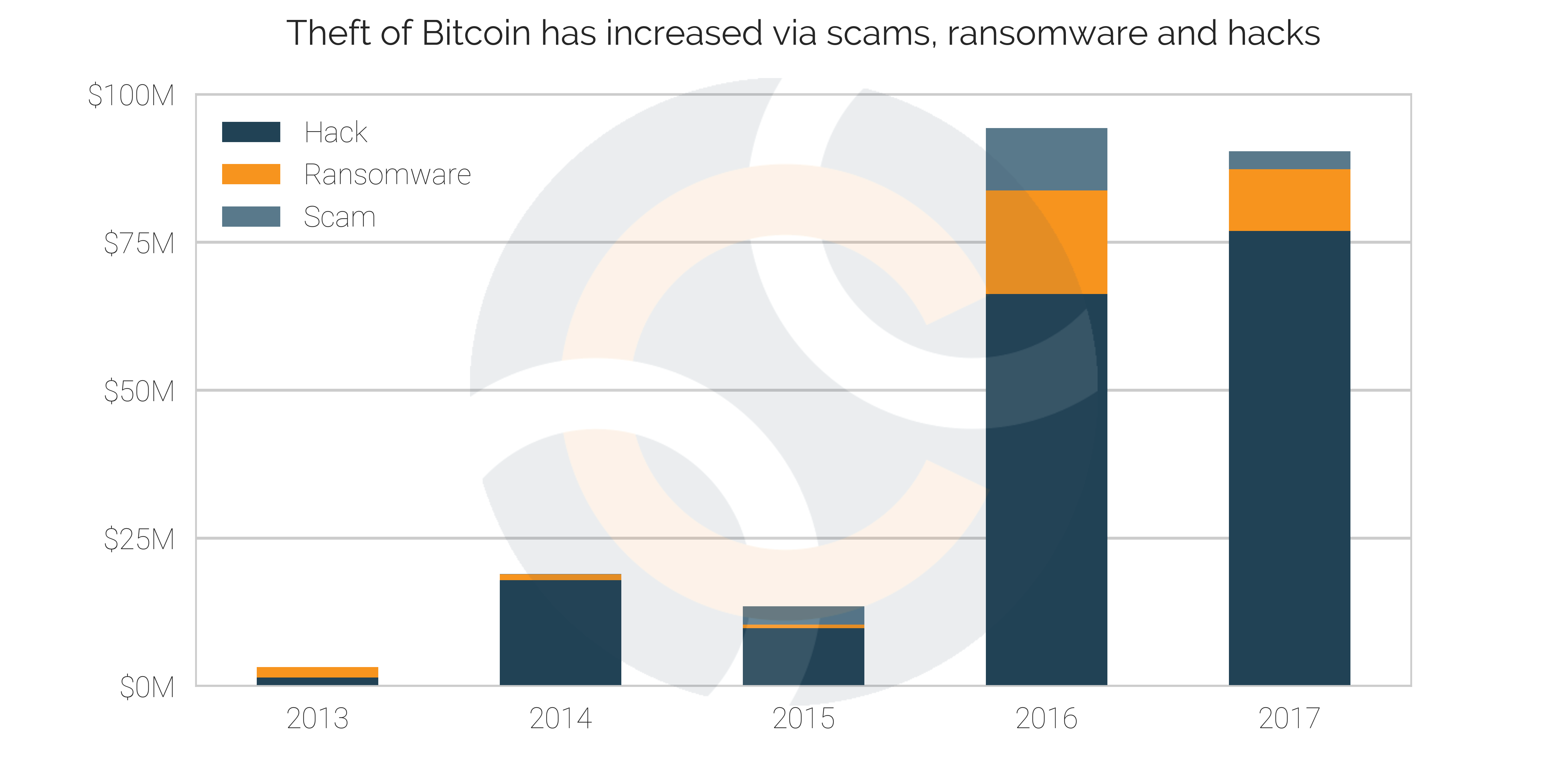This blog summarises the findings of our in-depth report, which can be downloaded below.
The nature of crime in the Bitcoin ecosystem has evolved since it was popularized as a way to buy drugs on the internet via the first darknet market, the Silk Road. Darknet markets are no longer a major use of Bitcoin, accounting for less than 1% of Bitcoin transactions in 2017, while theft of Bitcoin via scams, ransomware and hacks is on the rise, reaching at least $90 million in 2017[1].
Darknet Markets are no longer a major use of Bitcoin
The share of Bitcoin transactions sent to darknet markets has declined from 30% in 2012 to less than 1% in 2017, although the absolute value has increased, with $660 million of Bitcoin sent to darknet markets in 2017.

What explains these changes in darknet markets? At Chainalysis, we believe these shifts are due to three factors:
- Law enforcement has closed the largest darknet markets; for example the value of Bitcoin transactions to darknet markets fell by two thirds between May and July 2017;
- The rise of other uses of Bitcoin, namely as a financial asset; with tens of billions of dollars worth of Bitcoins being sent to exchanges in 2017, compared to the $660 million sent to darknet markets; and
- The growing use of alternative cryptocurrencies on darknet markets; such as Monero, Zcash and Dash, which offer greater anonymity and currently lower transaction fees than Bitcoin.
Theft of Bitcoin via scams, ransomware and hacks is on the rise
As Bitcoin has become more valuable, Bitcoin-related crime increasingly includes theft of other individuals’ holdings. Crypto-thieves tend to steal Bitcoins through scams, ransomware, and hacks. Chainalysis tracks major events in each of these categories, rather than providing comprehensive coverage. We find that theft of Bitcoin has risen from at least $3 million in 2013 to $95 million in 2016.

- Hacks have been the main source of Bitcoin theft, claiming at least $172 million worth of Bitcoin between 2013 and 2017, using prices at the date of the hack.
- Ransomware has earned criminals at least $31 million worth of Bitcoin. 80% of the amount stolen via ransomware attacks went to the top five strains of ransomware.
- The scale of scams is hard to assess but is likely to have affected a large number of victims. We investigated a sample of 23 scams using Chainalysis software, which accounted for over $17 million in stolen funds. The scale could be much larger, for example the Bitcoin Bad List, a user-generated list of possible scams, identifies 5,033 frauds since 2014.
The Future of Cryptocrime
These trends illustrate that Bitcoin is no longer just about cryptocrime, and that cryptocrime is no longer just about illicit exchange on darknet markets, but that cryptocrime is increasingly focused on the theft of Bitcoin as a highly valued financial asset. This changing nature of cryptocrime will require new approaches by law enforcement and increased vigilance against thefts and scams by Bitcoin users.
